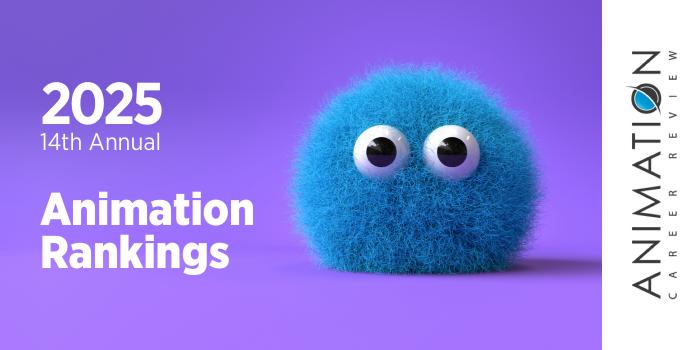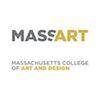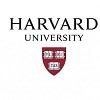
Become a 3D animator for film and games! Get specialized training to fast-track your career with CG Spectrum’s online 3D animation courses. Learn directly from expert animators working on hit films and best-selling games. Find out more.

| Ranking | School | City |
|---|---|---|
| 1 | Massachusetts College of Art and Design | Boston |
| 2 | Northeastern University | Boston |
| 3 | Harvard University | Cambridge |
| 4 | Emerson College | Boston |
| 5 | Tufts University | Boston |
| 6 | University of Massachusetts, Amherst | Amherst |
| 7 | Lesley University | Cambridge |
| 8 | Wellesley College | Wellesley |
| 9 | Hampshire College | Amherst |
| 10 | University of Massachusetts, Dartmouth | Dartmouth |
Our 2024 ranking -our fourteenth annual- of the top animation school programs in Massachusetts. For an explanation of the ranking criteria, click here.

Massachusetts College of Art and Design (MassArt) has a four-year Animation BFA program that focuses on experimentation and innovation. Housed in the school’s Animation Department, the program features courses taught by accomplished faculty; dedicated state-of-the-art labs, classrooms, and production spaces such as digital studios and stop motion stations; campus events such as screenings and exhibitions; collaborative projects; and the opportunity to display works on campus.
Students will begin the MassArt Animation BFA program with the 30-credit Studio Foundation Curriculum (SFC). In addition to taking courses such Studio for Drawing; Thinking, Making, Writing: Using Words with Clarity and Flair; and Visual Language, students will develop projects from start to finish. Critiques, both self and peer, are also part of the SFC, as well as opportunities to exhibit first-year projects at MassArt’s Brant Gallery.
In the second year of the Animation BFA program at MassArt, students will be introduced to animation basics, digital 2D animation, and experimental animation. Students will also take art history, liberal arts, and creative courses. Examples include Human Figure in Illustration; Animation 1: Basics; Life Drawing; Figurative Clay Construction; Introduction to Digital 2D Animation; Media Techniques; Color for Painting; Animation 2: Experiments; and Design for Animators.
In the junior and senior years of the Animation BFA program at MassArt, students will focus primarily on studio electives such as 3DCG Character Animation; Puppet Animation and Fabrication; and Sound Design for Animators. Examples of other advanced coursework includes Animation 3: Communication, and Animation 4: Production. BFA students will also complete an animation portfolio and animation project as the culminating experience for the program.
Graduates of the Animation BFA program at Massachusetts College of Art and Design are prepared to pursue creative roles in industries such as film and animation, digital art, advertising and marketing, and design. Program alumni have also gone on to launch their own studios or freelance businesses.
Founded in 1873, Massachusetts College of Art and Design is the first public, independent college of art and design in the U.S. The school serves approximately 1,940 students enrolled 18 undergraduate programs, nine graduate programs, and a number of minor, certificate, continuing education, and post-baccalaureate study programs. Massachusetts College of Art and Design is accredited by the New England Commission of Higher Education (NECHE) and the National Architectural Accrediting Board (NAAB).

With its signature experiential learning model and more than 3,500 employer partners, Northeastern University prepares students for immediate employment across industries. The school has established solid relationships with co-op employers such as Pixar, Industrial Light & Magic (ILM), Microsoft Studios, Walt Disney Company, Lucasfilm, Viacom, Electronic Arts (EA), Apple, Universal Pictures, Sony, Amazon, Adobe, CBS, and Meta.
Partnerships such as these are especially beneficial to students in Northeastern’s animation programs in the College of Arts, Media and Design (CAMD), and Khoury College of Computer Sciences.
Serving 2,800 students, the CAMD houses the Department of Art + Design, home to the Art + Design BFA with an Animation concentration; the Game Art and Animation BFA; and the Animation minor.
All programs take place in a collaborative, immersive environment, with opportunities to explore other areas such as virtual reality (VR), augmented reality (AR), and extended reality (XR); interactive video; and game design. In both BFA programs, students will work their way through the production pipelines for animated films, simulations, games, visualizations, spatial media, and visual effects (VFX).
Course examples for the CAMD Animation concentration include Animation Basics; Character Design for Animation; Virtual Environment Design; Making with Video, Sound, and Animation; Animation 1-3; and Animation for Games. The Media Arts Degree Project course is the culminating experience for this program.
The Game Art and Animation BFA program at Northeastern University requires 130 credit hours, with 90 in the major. Game Art/Animation students will take many of the same courses as students in the Animation concentration. Other courses may include Foundations of Game Design; Physical Computing; Games and Society; Experience and Interaction Tools; Game Concept Development; Narrative for Games; Survey of the Still Moving Image; Game Production; and Experimental Game Design.
Students will also complete the Media Arts Degree Project course as the culminating experience for the program.
Established in 1982 and the nation’s first computer science college, Khoury College of Computer Sciences houses the Computer Science BS (CS BS) program with a combined major in Media Arts. Consisting of 134 credit hours, the CS BS explores animation; AR/VR, artificial intelligence (AI), human-computer interaction (HCI), and machine learning; and traditional disciplines such as computer graphics, video, database design, and photography.
Course examples for the program include Making with Video, Sound, and Animation; Virtual Environment Design; Animation Basics; Introduction to Immersive Media; Animation 1-3; Experimental Video; Making with Video, Sound, and Animation Tools; Computer Graphics; Character Design for Animation; Human Computer Interaction (HCI); Animation for Games; and Animation Tools. The CS/BS/Media Arts program culminates with the Media Arts Degree Project.
Graduates of the CAMD BFA and Khoury BS/CS programs at Northeastern University have found success in areas such as animation, TV and film, game art and design, VR/AR, XR, advertising, HCI, and digital media. Program alumni have been hired by many partner companies and studios such as Apple, Amazon, CNBC, Google, Microsoft, IBM, Dolby, NBC Universal, and Meta.
Northeastern University began as the Evening Institute of the Boston Young Men’s Christian Association (YMCA) in 1898. Today, with 13 campuses across the U.S., Canada, and the UK, this global research university serves approximately 36,630 students from all backgrounds. Northeastern’s 10 colleges and schools provide more than 500 programs. Northeastern University is accredited by the New England Commission of Higher Education (NECHE).

The Department of Art, Film, and Visual Studies (AFVS) at Harvard University emphasizes an interdisciplinary approach to visual arts studies. This means students can concentrate in just about any area of visual arts. Examples include animation, filmmaking, video art, drawing, painting, and visual studies. Students in all concentrations have the opportunity to work with faculty in studios and focused seminars to reach their goals.
The AFVS Department is housed in the Carpenter Center for the Visual Arts—the nation’s only Le Corbusier building. In addition to the Carpenter Center, AFVS courses are held in Sever Hall—a National Historic Landmark, and Linden Street Studios—a designated space for faculty members, upper division students, and practicing artists).
For students who would like to pursue animation, the Department of Art, Film, and Visual Studies provides courses that allow students to customize their study plan. Examples include Fundamentals of Animation; Experimental Animation; Intermediate Animation; Film and Visual Studies Workshop; Embodied Practices: Coding and Interactivity for Artists; Advanced Projects in Time-Based Media; Contemporary Moving Image Practices; Adventure and Fantasy Simulation 1871-2036; Film Sound/Film Music; The Art of Film; Immersive Experience as Art; Film Study Center Non-fiction Filmmaking Workshop; A Video Toolbox; Drawing as a Visual Language; AI and Art; and Proseminar in Film and Visual Studies.
Leading to a BA with a concentration in Art, Film, and Visual Studies, the program culminates with a final project and presentation. Graduates of the AFVS programs at Harvard University are prepared to pursue careers in all areas of animation and film production. Program alumni have also gone on to teach or start their own independent studios.
Founded in 1636, Harvard University is the oldest institution of higher education in the U.S. Nearly 20,700 faculty and staff serve approximately 25,600 students enrolled in hundreds of programs across 13 degree-granting Schools and the Harvard Radcliffe Institute. Harvard University is accredited by the New England Commission of Higher Education (NECHE).

Emerson College (Emerson) has a unique study abroad experience that all students can participate in. The school's overseas campus in the Netherlands consists of a restored 14th-century moated medieval castle known as Kasteel Well. Located in the small village of Well, the campus welcomes around 90 Emerson students for summer programs, and for three months each fall and spring term.
Emerson College is also home to the School the Arts, which houses the Department of Visual and Media Arts (VMA). Within the department are two paths to study animation including the Media Arts Production BA (MAP BA) and the MAP BFA. Across programs, students have access to state-of-the-art equipment and facilities such as the Emerson College Emerging Media Lab (EML), where they can complete projects in areas such as 2D and 3D animation, character design, artistic anatomy, game design, rigging, and VR/AR.
Other VMA MAP benefits include hands-on work experience through Emerson College’s own in-house production company (Emerson Productions) or the Equipment Distribution Center (EDC); and opportunities to produce and screen work through film festivals and student organizations such as It’s All True – International Documentary Film Festival, Frames Per Second, Emerson Film Festival, and Women in Motion.
All Emerson MAP students have additional opportunities to gain experience at Emerson Los Angeles (ELA). Established in 1986 and situated on Sunset Boulevard, ELA is a state-of-the-art, 120,000 square feet LEED-certified building where students live, work, and learn for an entire semester. Up to 215 students arrive at ELA each fall, with the potential to secure internships at places such as Sony, Lionsgate, Netflix, Disney, or Hulu. The program provides access to more than 200 internship opportunities.
The MAP BA program at Emerson College has two tracks: Production and Media Studies. The Production track is the most popular option for animators. The program highlights courses such as Computer Animation; Writing the Feature Film; Game Design; Drawing for Character Design; Studio TV Production; Interactive Media; Writing the Short Subject; and Film Production. BA students have many opportunities to enhance the degree through the required 16 credit hours of Visual and Media Arts electives.
The MAP BA program at Emerson College culminates with the BA Capstone Project. This one-semester advanced production workshop allows students to produce portfolio work in any VMA area. BA Capstone students also have specialized access to facilities and unlimited production support for their projects.
MAP BFA students will complete all of the course requirements for the BA program, along with an additional 16 credits of advanced media production courses and electives. The program culminates with the BFA Thesis Project completed across two consecutive semesters.
Graduates of the VMA Department at Emerson College have been involved with major productions such as Everything Everywhere All At Once, Ant-Man, Fargo, Swiss Army Man, and Fantastic Four. Program alumni have also been hired at major studios such as Bunim Murray Productions, Digital Domain, MGM Studios, Searchlight Pictures, and Worldwide Pants.
Emerson College was established in 1880. The school serves approximately 4,930 students enrolled in more than 40 degree programs across the School of the Arts, the School of Communication, and Marlboro Institute. Campuses include Boston (main), Emerson Los Angeles (ELA), and Emerson Netherlands. Emerson College is accredited by the New England Commission of Higher Education (NECHE).

Tufts University (Tufts) is home to the School of the Museum of Fine Arts at Tufts University (SMFA at Tufts or SMFA). The school provides intensive studio arts training to an estimated 450 students. Programs take place in an interdisciplinary learning environment, with opportunities to gain hands-on experience through on-campus projects and internships. Students also benefit from visiting artist lectures; networking events; participation in student exhibitions; research projects; workshops; and career development programming.
SMFA at Tufts also provides two paths to study animation including the BFA and Combined BFA + BA/BS. All options allow students to customize a focus in one or more mediums in collaboration with academic advisors. Focus area examples include Animation, Film and Video, Virtual Reality, Digital Media, and Graphic Arts.
Students also have 24/7 access to the Animation Studios at SMFA, which provides a private animation suite; a large screening and production studio with adjacent labs focused on multimedia animation and shooting with LED lighting and DSLR cameras; and digital drawing capabilities with Wacom Cintiq's. The facility supports students experimental, digital, and traditional animation projects.
The BFA and Combined BFA + BA/BS programs explore 2D, 3D, hand-made, and digital techniques while creating everything from animated films to animation for advertising or the web. Sample courses across programs include Animation Basics; Animation Integration; Drawing for Animation; Stop Motion Animation; Moving Image; and Animation 2. Students can add the Studio Art minor to enhance the degree.
In the final year of the SMFA BFA program, students may apply to the SMFA Tufts Senior Thesis Program. During this yearlong capstone, student will develop professional works and an exhibition. BA and BS students will complete a final project to graduate. Combined BFA + BA/BS students will graduate with two degrees—a BFA, and a BA or BS in their chosen area.
Across all programs, graduates are prepared to pursue careers in film and animation, television production, game art and design, advertising, web design, and illustration, as well as emerging fields for animators such as medical animation, forensic animation, architectural visualization, motion graphics for social media, augmented and virtual reality (AR/VR), and educational animation.
The School of the Museum of Fine Arts at Tufts University has an additional option for animators seeking a master's degree: the Studio MFA. This terminal degree program provides the opportunity to work with faculty and staff to develop a personalized studio curriculum. Students can focus their studies in areas such as animation, film and video, graphic arts, AR/VR, installation, sound, or digital media.
The curriculum for this 60 credit hour program emphasizes seminars, visiting artists, exchange and travel opportunities, and the Graduate Colloquium. A forum for graduate students, faculty, and professional artists, Colloquia are all-day events that take place at the Museum of Fine Arts, Boston. Colloquia are open to the public.
The Studio MFA program at SMFA at Tufts culminates in a thesis and self-curated exhibition of the student's best work. Graduates are prepared to pursue leadership roles in film and animation, game art and design, advertising, television production, illustration, web design, AR/VR, medical animation, architectural visualization, forensic animation, research, motion graphics for social media, and education.
Founded in 1852, Tufts University is a private research institution that spans four campuses. The school serves approximately 13,430 students enrolled in more than 285 degree, minor, and certificate programs across ten colleges and schools. This includes the School of the Museum of Fine Arts.
SMFA began as a partnership with Tufts University in 1945, with the goal to provide a joint degree program focused on teacher training. The collaboration established its first BFA program in 1956. Today, SMFA at Tufts serves more than 400 students enrolled in BFA, MFA, MAT, Combined-degree (BFA + BA/BS), certificate, and studio diploma programs.
The School of the Museum of Fine Arts at Tufts University is accredited by the National Association of Schools of Art and Design (NASAD). As part of Tufts University, SMFA is also accredited by the New England Association of Schools and Colleges (NEASC).

University of Massachusetts at Amherst (UMass Amherst) is home to the College of Humanities and Fine Arts. Within the college is the Department of Art, which houses state-of-the-art labs, production facilities, and graduate studios for animation production, intermedia, painting, sculpting, and more. With an emphasis on art, design, and art education department also hosts the Visiting Artist and Practitioner Series, which features lectures and visits with students in their studios.
For aspiring animators, the Department of Art provides Studio Art BA and Art and Design BFA programs with opportunities to study animation; complete an internship; and participate in UMass Amherst Art Club. Students in the BA can study animation through 21 credit hours of electives after completing the Foundations Year (FY).
Electives examples include Visual Arts and Human Development I-II; Animation Fundamentals; Interactive Programming; Computer Animation I-II; and Moving Image. Throughout the program students will have the opportunity to complete several projects to include in their final professional portfolio.
The BFA has a formal Animation specialization with access to studio/seminar electives in film, communications, literature, and visual studies. The program begins with FY courses such as Basic Studio/Drawing; Foundation Studio 1-2; and Drawing Composition. Students will begin the animation specialization with the Introduction to Animation course, followed by courses such as Advanced Drawing Problems; Digital Imaging; Stop Motion Animation; Media and Motion Graphics; Experimental 3D Animation; and Advanced Animation Seminar.
As students advanced through the UMass BFA program, they will take courses such as Junior Year Writing Program; Professional Practices; and Contemporary Art. The culminating experience for the BFA program is the semester-long independent or collaborative animation project. This Advanced Animation also covers written and oral presentation skills, demo reels, film festival submissions, and research. Final projects will be presented in an exhibition or screening of works.
Graduates of the Studio Art and Art and Design programs at University of Massachusetts Amherst are prepared to pursue positions areas such as animation, live-action film, game design, television production, and advertising. Program alumni have worked on the Harry Potter and Star Wars films, and for studios such as Nickelodeon, Lucasfilm, and Warner Bros.
University of Massachusetts Amherst was founded as Massachusetts Agricultural College (MAC) in 1863. The school is the is the oldest member of the UMass System and part of the Five College Consortium with Hampshire College (Amherst), Amherst College (Amherst), Mount Holyoke College (South Hadley, MA), and Smith College (Northampton, MA).
Serving 30,790 students, UMass Amherst is also the largest school in the UMass System. Students have access to more than 200 academic programs across ten colleges and schools. The University of Massachusetts Amherst is regionally accredited by the New England Commission of Higher Education (NECHE).

The College of Art and Design at Lesley University (Lesley) an accredited institutional member of the National Association of Schools of Art and Design (NASAD). The college serves around 700 students, allowing for small studio classes and opportunities to work one-on-one with accomplished instructors who have worked for DreamWorks, Nickelodeon, and Fox. Lesley Art and Design students also have access to state-of-the-art visual effects (VFX) studio (the only one of its kind in New England); second major options; and 45+ in-demand minors.
All students must also complete an internship or apprenticeship. Examples of past participating studios include Nickelodeon; Warner Bros.; Adult Swim; Massachusetts Digital Games Institute (MassDiGi); SideFX; Northern Light Productions; Mind and Machine VFX; White Snake Projects; Boston Children’s Hospital; and Massachusetts Production Coalition.
Within the College of Art and Design at Lesley is an Animation and Motion Media (AMM) program with BFA and certificate options; a Visual Effects (VFX) BFA; and an Animation minor. Second major combinations for the AMM BFA include Animation and Motion Media + Creative Writing (Independent Cartoonist); Animation and Motion Media + Fine Art (Art Educator, Animation Professor); and Animation and Motion Media + Biology (Medical Animator).
The Animation and Motion Media BFA is a 120 credit-hour program that explores the 12 Principles of Animation, stop-motion, fine arts animation, digital CGI, narrative fabrication, character animation for 2D and 3D, cinematic language, and VFX. Course examples include Principles of Animation 1-2; 3D Concepts; Advanced Stop Motion Animation; Community Animation Studio; Experimental Animation; Animation Seminar; 3D Character Animation; Business of Animation; Virtual Cinematography; History of Animation; and Visual Culture Seminar.
The culminating experience for the AMM BFA program at Lesley University is the animation project (film) completed across the Animation Senior Studio 1-2 courses. Completed films will be screened and presented to juries.
The Lesley University VFX BFA integrates animation, design, film, and photography. Students in this 120 credit hour program will learn the 12 Principles of Animation, and select a focus area such as Animation, Compositing, 3D Modeling, or Rendering. Course examples include Animation Foundation Studio; 3D Physics and Simulation; Principles of Animation 1-2; Texture, Light and Rendering; Advanced Stop Motion Animation; Hard Surface Modeling; Digital Animation-2D; Procedural Modeling; Animation Seminar; Production Studio; 3D Character Animation; Art Across Borders; and Business of Animation.
All VFX students will have opportunities to gain hands on experience working the visual effects pipeline at production studios through internships and apprenticeships. The culminating experience for the program is a film that highlights storytelling, animation, and VFX skills. Students are required to present their productions at Lesley University for juries and the final presentation.
The Animation and Motion Media certificate is a professional, post-baccalaureate program that requires 60 credit hours of study. The program provides hands-on experience through Animation and VFX internships at studios in the Greater Boston area. Courses for the program are taught by instructors who have worked with major studios such as Nickelodeon and DreamWorks.
Course examples include Digital Animation 2D; Audio Production and Design; Principles of Animation I-II; Community Animation Studio; Art History; Introduction to 3D; and Storyboarding for Time-Based Media. The Animation and Motion Media certificate culminates with a film project completed across the Animation Senior I-II courses.
Graduates of the Animation and VFX programs at Lesley University work in areas such as animated filmmaking, live-action films, VFX for animation, experimental digital video, game art, television production, motion media for advertising, special effects, vision music, motion graphics, and education.
Lesley Animation and VFX University alumni have worked with companies and studios such as DreamWorks, HBO, Nickelodeon, PBS, Cox Media, General Electric, Fox, Warner Bros., Film Roman, and White Snake Projects. Some alumni have also gone on to launch their own studios or freelance businesses, while others have enrolled in graduate programs at major universities, art schools, and design colleges.
Founded in 1909, Lesley University serves approximately 4,500 students enrolled in more than 70 programs across the College of Liberal Arts and Sciences; the College of Art and Design; the Graduate School of Education; and the Graduate School of Arts and Social Sciences. Lesley University is accredited by the New England Commission of Higher Education (NECHE).

Wellesley College is home to the Computer Science Department and the Department of Art. Together these departments provide an interdisciplinary Media Arts and Sciences (MAS) program with tracks in Video Production; Game Development; Digital Design; and UX/UI. Students can also select courses to create a focus area that aligns with their career goals.
Courses for the program are taught by accomplished industry professionals. Examples include Introduction to Moving Image; The Graphic Impulse-Mediated Drawing; Two-Dimensional Design; Introduction to Media and Screen Culture; Three-Dimensional Design; Computing for the Socio-Techno Web; 4D Design Intro to New Media; Digital Imaging; Intermediate Film/Video Production; Computer Graphics; Data, Analytics, and Visualization; Digital Worlds for Gaming; Interactive Sound Art with Electronics; Persuasive Images; The Art of Screenwriting; Virtual Forms; and Advanced Projects in Interactive Media.
All MAS students have access to state-of-the-art labs and spaces such as the Media Arts Lab; Video Editing Suites; the Human Computer Interaction Lab; the Digital Fabrication Studio; the Flex Media Room; Playable Media Lab; and the Printmaking Studio. In addition, each summer Wellesley College funds over 250 students to work in internships around the world. This provides opportunities for MAS students to intern with Wellesley partners such as Peabody Essex Museum; Musee Yves Saint Laurent; the Metropolitan Area Planning Council (MAPC); and Tangier American Legation Institute for Moroccan Studies.
Other MAS program benefits include study abroad experiences in places such as France, Italy, and Spain; participation in the Wellesley Game Development Club; and the student-run initiative Wellesley in Product, which hosts the SPARKS designation in the spring, networking events, workshops, career exploration, and mentorships.
The Wellesley College MAS program culminates with a final project and presentation. Graduates are prepared to pursue careers in industries such as entertainment, game design, arts and culture, design, advertising, scientific visualization, computing, media and information, and architecture. Program alumni have been hired at places such as Google, Accenture, Microsoft, and The New York Times. Some graduates have gone on to pursue a graduate degree at places such as Harvard University, New York University (NYU), Columbia University, Cornell University, and University of Notre Dame.
Wellesley College was established in 1870. The school opened with 314 students served by a president, educators, and administrators who were mostly women. Today, Wellesley College is still a private institution committed to educating women. The school houses 30 departments that serve approximately 2,350 students enrolled in 60 majors across the liberal arts. Wellesley College is accredited by the New England Commission of Higher Education (NECHE).

Hampshire College is an innovative institution that allows students to design their own major from one of 50 areas of study. And, instead of formal academic years, students will work their way through the major while completing community-based learning experiences, projects, portfolio reviews, and papers. All programs lead to a BA degree.
For Animators, Hampshire College has an Animation and Digital Art area that allows students to work on projects alone and on interdisciplinary teams made up of animators, composers, filmmakers, computer scientists, and artists. Students also have the opportunity to complete an internship with the independent studio Bit Films. Founded in 2002, the studio also provides mentoring opportunities. Many short films produced through the Hampshire – Bit Film partnership have gone on to win dozens awards at film festivals around the world.
Students in the Animation and Digital Art area (and all areas across Hampshire College) have access to courses at Hampshire and through The Consortium. Sample Hampshire courses include Computer Animation I-III; New Media-Innovation, Adoption, Future; Animation Workshop; Programming Artificial Life; Women in Animation; Digital Art-Multimedia, Malleability and Interactivity; Pixelbending; Sequential Imaging I-II; Topics in Computer Graphics; and Foundations of Digital Media.
Five College Consortium course examples include Introduction to Media Arts and Technology; Interactive Digital Multimedia; Digital Sound and Music Production; Digital Art; Global Communication; Cinema and New Media; and Digital Cultures.
All Animation and Digital Arts students have access to three state-of-the-art animation studios and computer, video editing, and media labs; an e-classroom; a sound lab; film editing facilities; and an electronic music recording studio.
In the “senior” year of the Animation and Digital Art program, students will conceptualize, design, and finalize a solo project. Hampshire College graduates are prepared to pursue careers in all areas of animation and film. Program have been hired at places such as Cartoon Network, Pixar, and South Park Studios.
Founded in 1965, Hampshire College is part of The Five College Consortium with UMass Amherst (Amherst), Amherst College (Amherst), Mount Holyoke College (South Hadley), and Smith College (Northampton). This independent, not-for-profit institution serves approximately 715 students enrolled in self-designed programs across 50 areas of study. Hampshire College is accredited by the New England Commission of Higher Education (NECHE).

The College of Visual Performing Arts (CVPA) at University of Massachusetts Dartmouth (UMass Dartmouth) is an accredited institutional member of the National Association of Schools of Art and Design (NASAD), the national accrediting body for the visual arts. The CVPA serves approximately 540 students enrolled in more than 30 programs leading to a BA, BFA, BS, MFA, certificate, or a minor.
Across programs, students have access to the digital media labs, including five computer labs, featuring software for 2D and 3D animation, 2D imaging, 3D modeling, web design, and graphic design; graphic design and illustration facilities which provide individual workspace for graduate students, analog photo labs, and software for animation, 3D modeling, and web design; and the Painting-2D Medial Lab, featuring three studio classrooms and all types of media projects.
Other CVPA facilities and features include Hall-Hildreth IDEAStudio (a collaboration between the College of Engineering and the CVPA); two student gallery exhibition spaces; and other resources such as the Visual and Media Literacy Hub (VML HUB); and the Innovative Learning Collaborative (ILC), which provides access to MakerBots, a CNC router for digital fabrication, 3D printers, and laser engravers.
The CVPA at UMass Dartmouth also provides three paths to study animation including the Art and Design BFA: Animation and Game Art (AGA BFA); the Art and Design: Integrated Studio Arts BFA (ISA BFA); and the 18 credit-hour Animation minor.
The Art and Design BFA at UMass Dartmouth requires 120 credit hours, with 78 credit hours in the major. All first year CVPA degree-seeking students must complete the Foundations program before entering the BFA with a concentration. Examples of Foundations courses include 2D Form and Surface; 3D Form and Space; Structural Drawing; Visual Arts Seminar; and Digital Essentials.
In the AGA major in minor, students will take courses such as Principles of Animation and Story Structures, while working with digital tools such as Photoshop, Maya, and Unity3D. Common electives include Digital Video Production and Advanced Topics in Animation and Game Arts. AGA BFA students will also take 3D Modeling and 3D Animation, with access to other electives such as Visual Design for Games, and Illustration: Character Design and Environments.
In the last two years of the AGA BFA, students will have opportunities to complete an internship and/or study abroad experience. In the final year, students will complete the Professional Design Practice course and the culminating A+GA Capstone and Exhibition.
The Art and Design: Integrated Studio Arts BFA at University of Massachusetts Dartmouth provides the unique opportunity to mix-and-match studio courses from other CVPA programs to create-your-own study plan. Courses may come from Animation and Game Arts; Illustration; Graphic Design; Drawing; Painting; Photography; and Sculpture.
ISA BFA students may also explore fields across UMass Dartmouth. Examples include Engineering, Business, and Computer Science. This 120 credit hour program begins with the Foundations program and ends with the Studio Art Capstone and Exhibition.
With a 91% employment rate, AGA and ISA BFA graduates are prepared to pursue positions in traditional, new, and emerging fields such as animation, scientific visualization, VR/AR, forensic animation, visual effects (VFX), software design, video editing, special effects (SFX), multimedia, art direction, UI/UX, game design, advertising, environmental design, and art education.
Program alumni have been hired at places such as Microsoft, Woods Hole Oceanographic Institution (WHOI), Razorfish, White Rhino, Jack Morton Worldwide, iFactory, Sametz Blackstone Associates, Zak Pak, and BORN XDS (formerly Mad*Pow).
University of Massachusetts Dartmouth began as New Bedford Textile School in 1895. The school serves approximately 7,460 students enrolled in more than 120 undergraduate and 42 graduate fields of study across seven colleges and schools. University of Massachusetts Dartmouth is accredited by the New England Commission of Higher Education (NECHE).